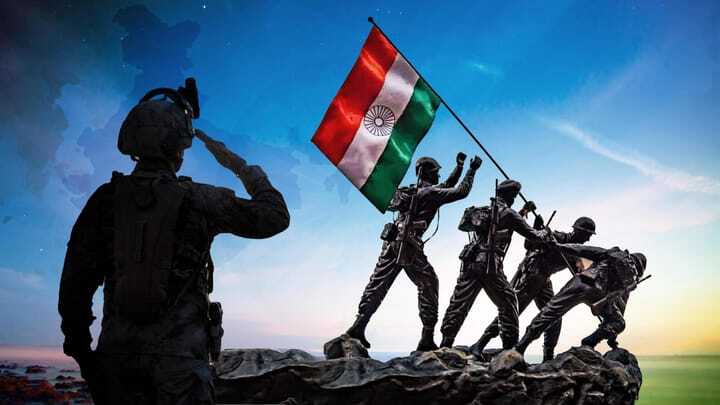India, a rising global power and the world’s second-most populous country, is strengthening its military capabilities to keep pace with its growing geopolitical ambitions. India’s military, comprising the Indian Army, Navy, and Air Force, is among the world’s largest and most capable forces. The country’s defense forces have made significant strides in recent years, bolstered by technological advancements, defense collaborations with foreign nations, and a substantial increase in military spending. This article provides a comprehensive overview of India’s military capabilities, its modernization initiatives, the challenges it faces, and the country’s strategic priorities.
Table of contents
India’s Military Capabilities
The Indian military has made significant strides in recent years, with its three service branches – the Indian Army, Navy, and Air Force – strengthening their capabilities. The Indian Army is one of the largest and most powerful ground forces globally, with over 1.4 million active personnel. It has several modern weapons systems, including T-90S tanks, BrahMos missiles, and indigenous advanced light helicopters (ALHs). The Indian Army is also moving towards acquiring high-tech equipment, such as drones and unmanned ground vehicles, to enhance its capabilities.
The Indian Navy is the fifth-largest navy globally, with over 150 vessels, including one aircraft carrier, ten destroyers, thirteen frigates, and fifteen submarines. The Indian Navy has a significant presence in the Indian Ocean region, and its latest acquisitions include the INS Vikrant, the country’s first indigenous aircraft carrier, and the INS Arihant, India’s first nuclear-powered ballistic missile submarine. The Indian Navy is also working on modernizing its anti-submarine warfare capabilities and developing advanced sea-based weapons systems.
The Indian Air Force (IAF) is the fourth-largest air force globally, with over 1400 aircraft, including fighter jets, transport planes, and helicopters. The IAF is modernizing its fighter aircraft fleet with the acquisition of the Rafale fighter jets, which are considered to be among the most advanced aircraft globally. The IAF is also acquiring additional C-130J Super Hercules transport aircraft, Boeing Chinook heavy-lift helicopters, and air defense systems such as the S-400 Triumf missile system.
Defense Modernization Initiatives
India’s military modernization program has been progressing steadily, with a focus on acquiring modern weapons systems and technology. The country’s defense forces are engaging in significant collaborations with foreign defense firms to achieve their modernization goals. In February 2021, the Indian Navy signed a $2.4 billion deal with the US-based defense firm General Atomics for the acquisition of advanced unmanned aerial vehicles. The Indian Army is also working on several projects with foreign firms to acquire high-tech equipment, such as the Spike anti-tank guided missile systems.
India’s defense sector is also undergoing significant reforms to boost domestic manufacturing and innovation. The government’s “Make in India” program aims to transform India into a global defense manufacturing hub by encouraging domestic firms to manufacture advanced defense equipment locally. The program has already witnessed several success stories, such as the development of the Tejas light combat aircraft, which is set to replace the IAF’s aging MiG-21 fleet.
Challenges and Priorities
India’s military faces several challenges, including outdated equipment, insufficient defense spending, and complex security challenges on multiple fronts. The ongoing border conflict with China and the persistent threat of terrorism pose significant challenges to the country’s defense forces. The Indian Army is undertaking significant reforms to address these challenges, such as restructuring its formations and increasing its logistical capabilities. The Indian Navy is also focusing on enhancing its regional presence to protect the country’s maritime interests, including the critical sea lanes of communication.
In addition to these challenges, India’s military must also balance its modernization efforts with other critical priorities, such as economic development and social welfare. The government’s defense spending is around 1.5% of its GDP, which is relatively low compared to other major global powers. The country’s focus on modernization, therefore, needs to be balanced with broader strategic priorities.
India’s Nuclear Weapons Program
India’s nuclear weapons program is a critical component of the country’s national security strategy. India is one of nine nuclear-armed nations globally and has been strengthening its nuclear capabilities in recent years. The country has a “no-first-use” policy, which means it will not use nuclear weapons unless attacked with nuclear weapons first. However, India has also been developing new nuclear-capable missiles and expanding its missile range, which has raised concerns among other nations in the region.
India’s nuclear arsenal is estimated to comprise around 150 nuclear warheads, and the country is investing in the development of advanced nuclear technologies, such as thermonuclear weapons and missile defense systems. India’s nuclear weapons program is a critical component of its strategic deterrence, but it also faces significant challenges, such as ensuring the safety and security of its nuclear arsenal and avoiding a nuclear arms race with other nations in the region.
The Indian Military’s Role in the Indo-Pacific Strategic Environment
India’s strategic position in the Indo-Pacific region is critical, given its location and rising economic and military power. The country’s military is playing a significant role in shaping the regional security environment, with its focus on strengthening its maritime capabilities and developing closer defense ties with other nations in the region. The Indian Navy is working closely with other regional navies to conduct joint exercises and enhance its interoperability with partner nations.
India is also a member of the Quadrilateral Security Dialogue, which includes the US, Japan, and Australia. The group is focused on promoting a free and open Indo-Pacific and enhancing regional security cooperation. India’s military cooperation with these nations has been growing in recent years, with the US and India conducting several joint military exercises, including the Malabar naval exercise, which involves the navies of all four Quadrilateral members.
Conclusion
India’s military power is a critical component of the country’s national security and global ambitions. The country’s defense forces have made significant strides in recent years, with its modernization initiatives and collaborations with foreign defense firms contributing to its growing capabilities. However, the Indian military also faces several challenges, such as insufficient defense spending and complex security challenges on multiple fronts. The military must balance its modernization efforts with other critical priorities, such as economic development and social welfare, to ensure its long-term sustainability. The Indian military’s role in shaping the regional security environment in the Indo-Pacific is also critical, given the country’s strategic position and rising economic and military power.
Bibliography
- “Indian Military Strength.” Global Firepower, 2022, https://www.globalfirepower.com/country-military-strength-detail.php?country_id=india.
- Pandit, Rajat. “Indian Armed Forces’ Quest for Technological Upgradation.” The Economic Times, 11 Feb. 2022, https://economictimes.indiatimes.com/news/defence/indian-armed-forces-quest-for-technological-upgradation/articleshow/89822221.cms.
- Rajagopalan, Rajeswari Pillai. “India’s Nuclear Arsenal and the Deterrence Stability in South Asia.” Carnegie India, 2 Mar. 2021, https://carnegieindia.org/2021/03/02/india-s-nuclear-arsenal-and-deterrence-stability-in-south-asia-pub-83881.
- Singh, Jasjit. “India’s Military Power: Opportunities and Challenges.” Institute for Defence Studies and Analyses, 18 Aug. 2021, https://idsa.in/issuebrief/indias-military-power-opportunities-and-challenges-jsingh.
- “The Quad: A Diplomatic Quartet of Rising Democracies.” The Diplomat, 7 Feb. 2022, https://thediplomat.com/2022/02/the-quad-a-diplomatic-quartet-of-rising-democracies/.
- “The World Factbook: India.” Central Intelligence Agency, 14 Feb. 2022, https://www.cia.gov/the-world-factbook/countries/india/.
- Wadhwa, Srishti. “India’s Strategic Imperatives in the Indo-Pacific Region.” Observer Research Foundation, 29 Jun. 2021, https://www.orfonline.org/expert-speak/indias-strategic-imperatives-in-the-indo-pacific-region-80121/.
- Yadav, Shivendra. “Is India Capable of Fighting a Two-Front War?” The Diplomat, 28 Feb. 2022, https://thediplomat.com/2022/02/is-india-capable-of-fighting-a-two-front-war/.
Disclaimer: The information provided in this article is based on publicly available sources and is intended to provide general information and analysis of the military power of India. The article does not claim or guarantee the accuracy, completeness, or reliability of the information presented. This article is not intended to provide professional advice or opinions on defense and security matters. The reader should always consult with qualified professionals for specific advice on such matters. Bishleshon Team are not responsible for any damages or losses arising from the use of or reliance on the information provided in this article.



 For all latest articles, follow on Google News
For all latest articles, follow on Google News